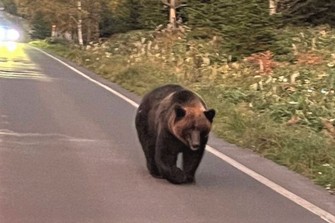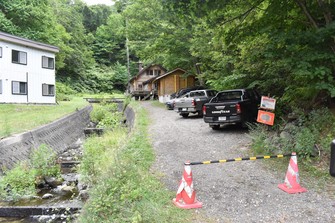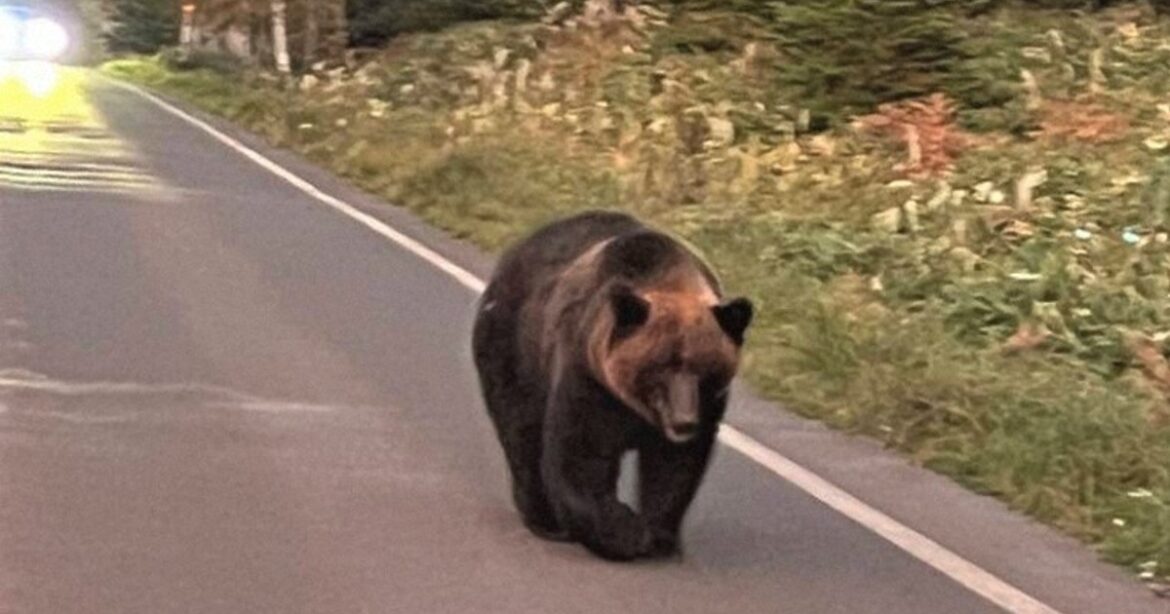
The brown bear nicknamed “Iwaobetsu’s Mom” encountered by Takumi Nakashima in October 2024 is seen in this photo provided by the individual. Even when passing by in a car, she apparently showed no signs of fleeing.
Nicknamed “Iwaobetsu’s Mom,” the brown bear that recently killed a hiker on Mount Rausu in Hokkaido’s Shiretoko Peninsula had been well-known among local residents for being accustomed to humans.
One repeat visitor to the peninsula was surprised about the news and wondered, “Why did the experienced mother bear, who was said to be indifferent to humans and safe, attack?”
The incident has shaken the foundations of safety, a prerequisite for tourism, placing the World Natural Heritage site of Shiretoko at a crossroads.
Tokyo resident Takumi Nakashima, 46, visited the Shiretoko Peninsula four times last year, enjoying walks in the primeval forest. In October, he spotted a brown bear walking along a roadway in the mountains in the town of Shari. When he asked a familiar guide, he was told it was “Iwaobetsu’s Mom.”
“I heard she was a veteran who had raised many cubs. Even when passing by in a car, she didn’t show any interest in us,” Nakashima recalled.
Nakashima was surprised when he received news from the guide that this bear had attacked a man in the mountains. At the same time, he realized, “Including myself, the entire Shiretoko area had become numb to the distance we should keep from wild animals.” Nakashima is referring to the time when he was told, while walking with a guide in the primeval forest, “Shiretoko’s brown bears have plenty of food, so they don’t attack humans,” which he somehow accepted, as well as the fact that the deer and foxes he encountered in the forest were less wary and accustomed to humans.
In hindsight, he feels that “the assumption that accidents wouldn’t happen might lead to a misjudgment of the distance to keep from the animal.”

The entrance to the climbing trail on Mount Rausu is seen restricted in Shari, Hokkaido, on Aug. 15, 2025. (Mainichi/Takeshi Honda)
The mother bear that attacked a hiker was 140 centimeters long, weighed 117 kilograms, and was 11 years old. She was culled along with her two cubs. The Shiretoko Nature Foundation, which conducts research on wildlife, had recorded the mother bear with the identification code “SH.”
As of Aug. 21, there were 592 sightings of brown bears in Shiretoko in 2025, with more than 30 sightings of the bear believed to be SH, mainly in the Iwaobetsu area. It’s been confirmed that she gave birth to two cubs sometime in May or later.
On Aug. 10, a few days before the attack, a brown bear with two cubs approached a hiker on a trail on Mount Rausu. The hiker had to back away while holding bear spray. Two days later, a bear pursued a hiker for five minutes, even after the hiker sprayed it with bear deterrent. Both incidents are believed to have involved SH and her cubs.
SH had previously been observed not avoiding humans or fleeing when encountered, and the Shiretoko Nature Foundation had to take measures to scare her away every time.
Regarding rumors circulating online about the bear being fed by humans, the foundation states that it’s not based on verified facts.
At the same time, the foundation raised questions about the practice among some guides and hikers of giving nicknames to bears that frequently appear in front of people, stating, “While people are free to name wild animals, these are not pets. A nickname suggests closeness to humans, which can lead to the animal not keeping the necessary distance.”
Furthermore, the foundation stated, “As an organization involved in the conservation and management of brown bears, this was a serious and grave incident. It significantly impacts environmental conservation, tourism and residents’ everyday lives. We will provide information necessary to analyze the accident and prevent a recurrence, and will be active in proposing safety measures.”
(Japanese original by Takeshi Honda, Kitami Bureau, and Karen Goto, Hokkaido News Department)


AloJapan.com